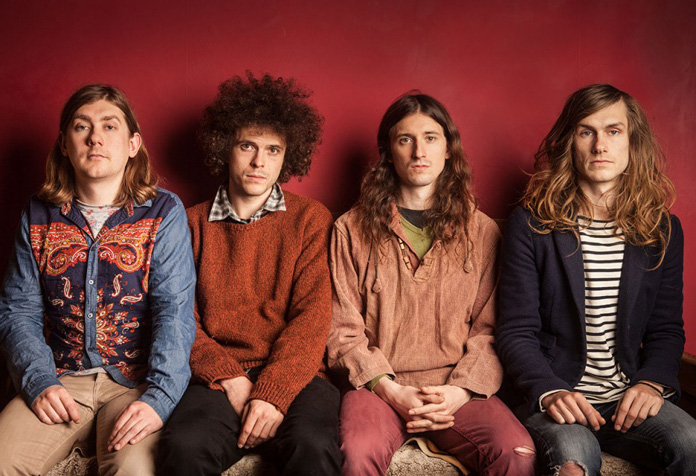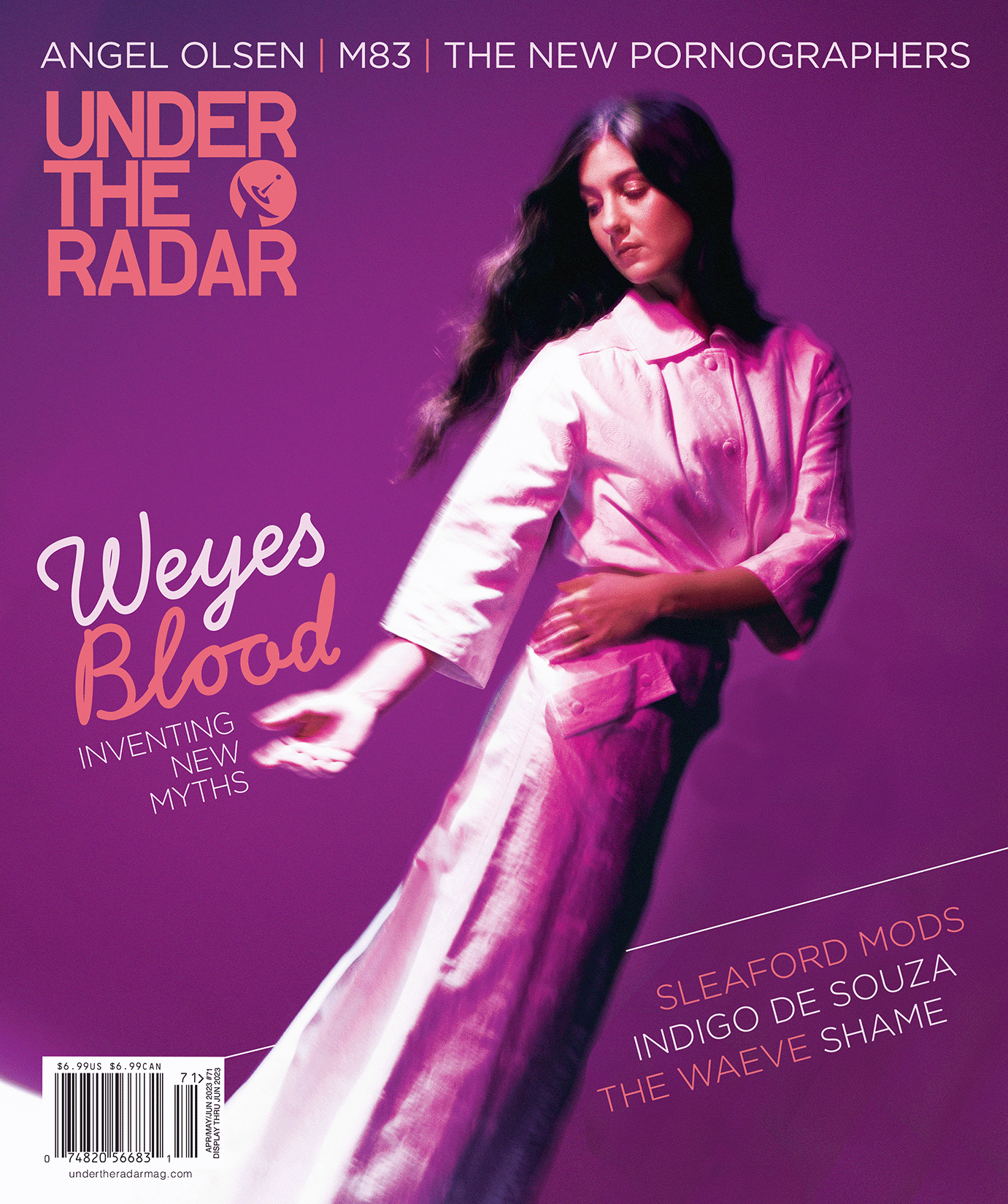
Syd Arthur Conjures Musical Canterbury Tales on its New Album
Festival Folk
May 21, 2014
Syd Arthur
![]()
Syd Arthur is a South by Southwest success story. The four-piece British band—no, it’s not the name of an individual—raised money to attend last year’s annual music industry festival in Austin, Texas. At the time, Syd Arthur was a DIY outfit that only had one independently released album (2012’s On an On) to its name. The payoff? An A&R man for Harvest Records (a division of Capitol Music) signed the group after watching them play a SXSW show. It’s an appropriate marriage: the Harvest label was once home to Pink Floyd’s Syd Barrett, who partially inspired the band’s name, a too-clever-by-half homage to Hermann Hesse’s novel Siddhartha.
The members of the group—Liam Magill (guitar, vocals), his brother Joel (bass), Raven Bush (violin, keyboard, mandolin), and Fred Rother (drums)-met in high school in Canterbury. It’s a safe bet that they had to study Geoffrey Chaucer during English class. Syd Arthur’s new album, Sound Mirror, nods toward another local institution, the so-called “Canterbury scene.” During the late 1960s and early 1970s, the town spawned a number of bands that blended jazz, folk, and psychedelic sounds into a progressive stew. Syd Arthur bears the influence of the wistful and bucolic feel of Caravan and the tricky time signatures of Soft Machine, but it has a contemporary edge and pop sensibilities that have led to comparisons to Wolf People and Tame Impala.
“Obviously there’s a geographical influence of sound,” says Bush. “It’s definitely an element in our sound, just as much as other things we listen to in different genres of music.”
The breezy grooves and sunny sound of Sound Mirror make Syd Arthur an ideal festival band. This summer, they’re booked for Bonnaroo as well as a number of European festivals. Under the Radar caught up with Raven Bush soon after Syd Arthur’s recent appearance at Coachella to chat about the making of Sound Mirror, released May 20.
Stephen Humpries (Under the Radar): What was your most memorable experience at Coachella?
Raven Bush: It was our first proper American festival. We were watching Queens of the Stone Age when the dust storm hit. We had to cover up to get out from the stifling dust. We saw Temples, Beck, and a bit of Little Dragon.
Did you see anyone famous backstage?
I walked past Beyoncé! That was fucking surreal. Beyoncé and Jay-Z are definitely two of the most famous people in the world. They were chill. They didn’t really have bodyguards. Or, if they did, they blended in very well!
Your aunt, Kate Bush, is pretty famous—she’s a rarer sight than Beyoncé. Has she given you any feedback on your music and are you going to see her perform live in London this fall?
It’s always positive feedback from her. At the minute, it’s looking like I will be around. It all depends on what happens after the record comes out. I’m really looking forward to seeing her play myself. For me, it’s totally surreal, as I’ve never seen her play live. Kate is so down to earth. My relationship with her has really been as an auntie outside of the musical profession.
You have another well-known fan in the form of Paul Weller.
He’s like a great musical friend. We got invited to his studio. It’s a nice exchange because he can get to jam with us and we do things a little different from the stuff he’s doing. And we can watch him just totally nail the delivery of a song—what a fantastic songwriter and voice. Our initial meeting led to us going on tour together. We learned so much because that was the first big tour we’d done, playing to 3,000-5,000 per night.
Tell me about Weller’s role in shaping the new song “Hometown Blues.”
It came out of a jam. There was a riff that I had on the piano that I’d written the night before going into the studio with Paul, just so we had a few ideas. I started playing it on the piano and Paul’s engineer, Charles [Rees], said “That’s a great riff. Let’s start jamming on that.” Literally, within a few hours, we’d written the chorus and the pre-chorus. By the end of that day, we’d tracked a version of it. The basics of it came together in Paul’s studio. It was nice for us because we’d pretty much recorded and produced ourselves, so it was a nice little writing session. We spent three or four days total in the studio with Paul.
When you recorded Sound Mirror, what were your musical aspirations for it?
We haven’t gotten into making concept records, but we’re really into the album as a body of work that stands by itself and the tracks flow into each other. It’s definitely got a beginning, middle, and an end even though the elements are separate. We want diversity but with continuity. We had five or six tracks fully formed and the rest of it came together in the studio. I think it’s because of a certain confidence we’ve developed over time of working in the studio. In terms of songwriting, when we’re trying to deliver a melody or a lyrical idea, we strip it back and make it as punchy as possible. That’s something we learned from playing gigs with Paul Weller on bigger stages. Then, when we are going instrumental, we go really crazy. Pushing those extremes further apart is what we were trying to do with this record. We try and cram a lot into three-and-a-half- or four-minute songs.
Do you play the songs differently in concert?
We’ve actually combined “Chariots” and “Singularity.” On the record, they kind of flow into each other. Live, we do a different arrangement so that the tunes almost morph into one. I really hate nothing more than when you see someone live and it sounds exactly the same live. I’m a little bit disappointed, because I already have the record at home. We’re very much into improvisation, and the song structures change. We’re finding bits in the composition that are open and they change every night. The thing is, even if there’s improvisation, we never stretch the songs beyond four or five minutes.
Finally, how did the band come up with the name Syd Arthur?
Syd Arthur is quite an English name—both those names are English. There’s a little nod to Syd Barrett in there. It just clicked. There are so many bands called “The [Something],” so it’s quite nice to have Syd Arthur as an entity. We’ve thought about wheeling out an anecdote or story about how Syd was a fifth member of the band who got abducted by aliens or something.
[Pick up Under the Radar’s next print issue to read more from our interview with Syd Arthur.]
Most Recent
- Fontaines D.C. Announce New Album, Share Video for New Song “Starburster” (News) — Fontaines D.C.
- Yannis Philippakis of Foals Announces New EP with the Late Tony Allen, Shares “Walk Through Fire” (News) — Yannis & The Yaw, Foals, Tony Allen
- Premiere: Meli Levi Shares New Single “Close to You” (News) — Meli Levi
- Hana Vu Shares New Song “22” (News) — Hana Vu
- John Grant Shares Lyric Video for New Song “The Child Catcher” (News) — John Grant


Comments
Submit your comment
There are no comments for this entry yet.